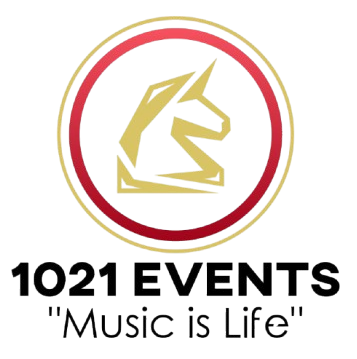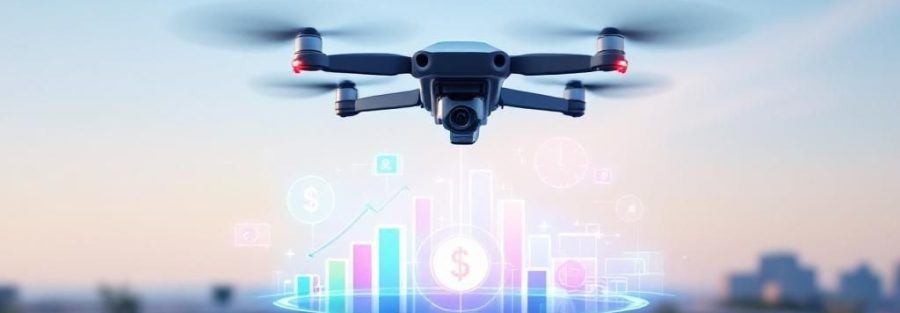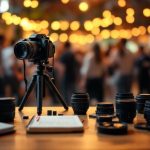So, you're wondering about drone videography rates. The short answer? You can expect to see prices starting around $100 to $300 per hour.
But that's just the starting line. For more involved projects that require sophisticated editing, that rate can easily jump past $500 per hour. Some pros will skip hourly rates altogether and quote a flat project fee, which can run into several thousand dollars.
How Much Does Drone Videography Really Cost?
Trying to pin down a firm price for drone videography can feel like asking an artist for a quote before they've even sketched out the painting. The final cost really boils down to the masterpiece you're trying to create.
Are you just looking for a few simple, sweeping shots of a piece of real estate? Or are you aiming for a fully produced, cinematic video to capture a once-in-a-lifetime event? Each of those demands a completely different level of skill, gear, and time in the editing bay.
This huge range in pricing is a sign of a booming industry. In fact, the global drone camera market just hit a staggering USD 10.9 billion valuation. That number shows just how much incredible value drones are adding to everything from weddings and films to real estate marketing. If you're curious, you can get a deeper dive into this market growth and what's next over on Vocal.media.
Breaking Down the Rate Tiers
To help make sense of it all, let's break down the costs into a few common tiers. Think of it like booking a flight—you've got economy, business, and first-class options, and each comes with its own price tag and perks. Drone services are a lot like that, with different levels of quality and included features depending on your budget.
For event planners, getting a handle on these differences is everything. A quick fly-over to capture the scale of an outdoor festival is worlds away from getting those intimate, cinematic shots at a wedding. Understanding what goes into professional drone event photography helps you budget smarter and, most importantly, hire the right pilot for your specific needs.
The biggest thing to remember is this: you’re not just paying for a drone. You're investing in the pilot's experience, their safety protocols, their creative vision, and their post-production wizardry. A higher price tag usually means a smoother experience and a much, much better final video.
To give you a clearer idea of what your money gets you, here’s a quick rundown of what you can expect at different price points.
A Quick Guide to Drone Videography Rate Tiers
This table gives you a snapshot of the different levels of service you'll find out there.
| Service Tier | Typical Hourly Rate | Best For | Key Features |
|---|---|---|---|
| Beginner/Hobbyist | $75 – $150 | Simple real estate photos, small personal projects | Basic equipment, raw footage provided, limited editing |
| Intermediate | $150 – $350 | Corporate events, weddings, commercial properties | Professional gear, basic editing & color correction included |
| High-End Pro | $350 – $500+ | Feature films, luxury real estate, major campaigns | Advanced cinematic drones, complex editing, motion graphics |
From a quick look, you can see how the service and quality scale with the price. Choosing the right tier ensures you get the results you need without overpaying for features you won't use.
The Core Factors Driving Your Final Quote
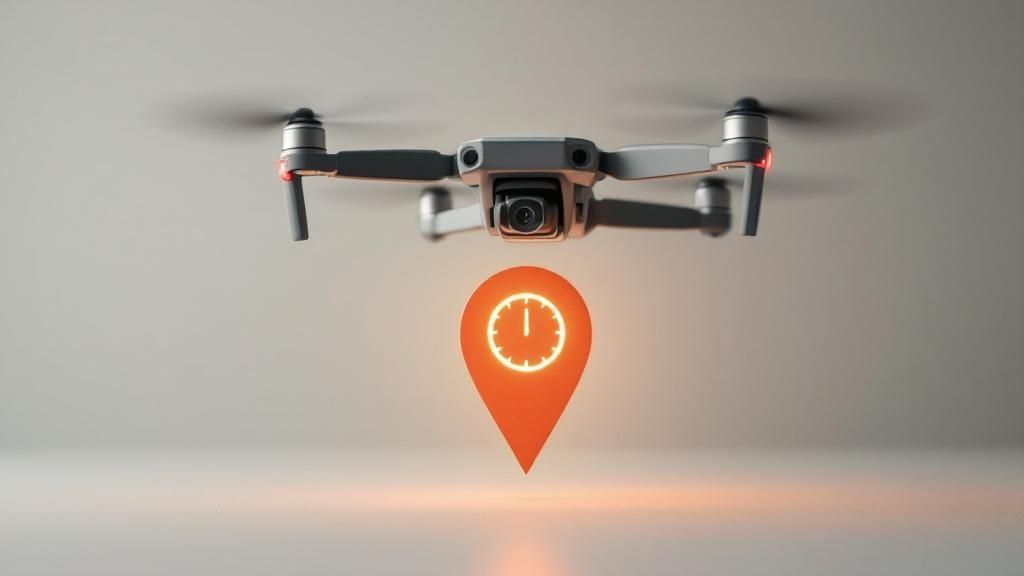
When you start looking at drone videography rates, you’ll notice they can be all over the map. But this isn't just pilots pulling numbers out of thin air. The final quote you get is actually a careful calculation based on a few key ingredients that dictate the quality, safety, and overall complexity of your project.
Getting a handle on these factors helps you see exactly what you’re paying for. It also puts you in the driver's seat, allowing you to tweak your project to fit your budget without cutting out the shots that really matter.
Let's pull back the curtain and look at the main things that shape your final price.
Pilot Expertise and Certification
First and foremost, you’re not just renting a drone; you’re hiring the pilot’s skill and professional experience. An experienced, FAA-certified pilot brings a lot more to the table than just knowing how to keep a drone from crashing. They have a deep understanding of airspace rules, risk management, and the artistic eye to capture those buttery-smooth, cinematic shots an amateur just can't pull off.
Think about it. A seasoned pro knows exactly how to react to curveballs like a sudden gust of wind or fading light. That expertise is your guarantee that the shoot will be a success—and just as importantly, that it will be safe and legally compliant, which keeps you out of hot water.
Drone and Camera Gear Quality
The quality of the equipment makes a night-and-day difference in the final video. A pro drone videographer has likely invested thousands upon thousands into their gear, and that big investment naturally gets factored into their rates.
- Drone Model: High-end drones like the DJI Inspire 3 offer incredible stability, longer flight times, and advanced safety features that are essential for professional work.
- Camera Sensor: A bigger camera sensor, like a Micro Four Thirds or full-frame, captures way more detail, richer color, and better dynamic range, especially when the light isn't perfect. This is what separates a grainy, amateur-looking video from a crisp, vibrant film.
- Lenses and Filters: The pros also carry a kit of different lenses and filters to create specific creative looks and handle tricky lighting situations, adding that extra layer of polish to the final footage.
This kind of professional-grade equipment is a major operating cost for any pilot, and it’s one of the biggest reasons their rates are a step above a hobbyist with an off-the-shelf drone.
Project Complexity and Risk
Let's be real: not all drone shoots are the same. A simple flight over an empty field is a walk in the park compared to navigating a packed city street or weaving through a dynamic event space. The environment and what you’re asking the pilot to do have a direct impact on the price.
A project’s complexity is probably the biggest wild card in drone videography rates. Flying over a private estate with no one around is low-risk. Capturing footage for a wedding, on the other hand, means carefully planning every shot around people, buildings, and a constantly moving schedule.
For example, getting that perfect, swooping aerial shot of a couple's first dance requires a ton of precision and careful risk management. It's why specialized services, like those we cover in our guide to drone wedding videography, often come with custom pricing tailored to the unique flow of the day.
Post-Production and Editing
Finally, the work is far from over when the drone touches down. Raw footage is just the starting point; the real magic happens in the editing suite. The amount of post-production work you need will play a huge role in the final cost. This is also a key reason why the drone videography services market, once valued at USD 870 million, is projected to absolutely skyrocket.
You’re not just paying for flight time—you’re paying for a finished, polished product. That can include color grading, sound design, motion graphics, and stitching together a compelling story. This growing demand for high-quality finished videos is a big part of the industry's boom. You can dig deeper into this surge and what it means for your projects by checking out this detailed market analysis.
Alright, let's break down what you're actually getting when you hire a drone videographer. It's rarely a simple, one-size-fits-all situation.
Decoding Common Drone Videography Packages
When the quotes start rolling in, you might notice something confusing: no two packages look the same. Trying to compare them can feel like trying to compare apples and oranges. One pilot offers a low price for "one hour of flight," while another's quote is triple that but includes "full post-production."
The secret is to look past the sticker price and dig into what’s actually included. Some quotes are for the bare minimum—just the raw, unedited clips straight from the drone. Others are the whole shebang: planning, flying, and a beautifully edited final video complete with music and graphics. Knowing the difference is everything when it comes to setting a realistic budget.
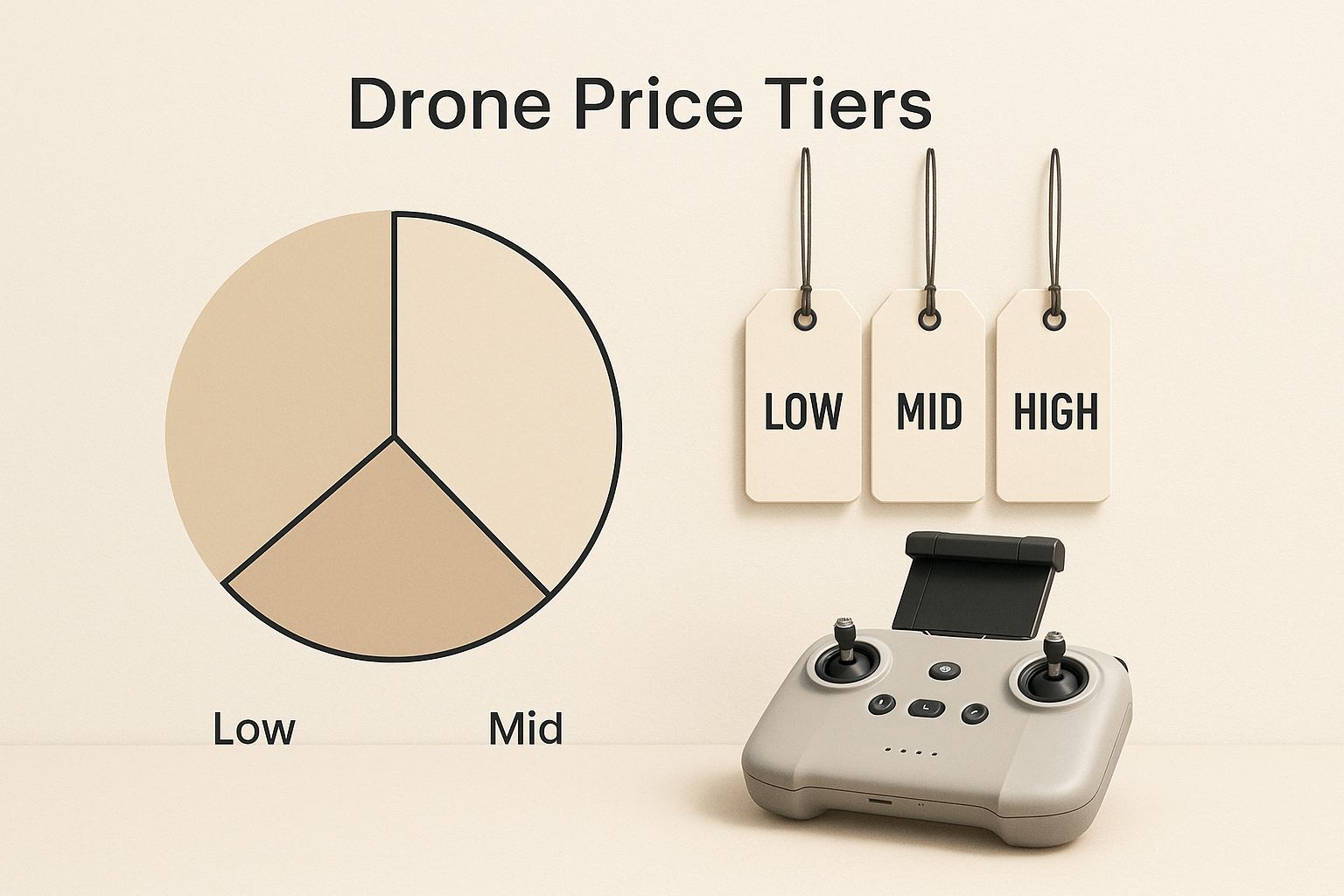
As you can see, the more you pay, the more hands-off the process becomes for you. You're not just paying for flight time; you're paying for a finished product.
Sample Drone Videography Package Comparison
To make this more concrete, let's look at how packages are typically structured for different needs. A real estate shoot has very different requirements than a wedding, and the pricing and inclusions will reflect that. This table gives you a general idea of what to expect.
| Package Type | Typical Inclusions | Average Price Range | Ideal Use Case |
|---|---|---|---|
| Real Estate Basic | 30-60 mins flight time, 5-10 aerial photos, 1-2 min lightly edited video, exterior shots only. | $250 – $600 | A quick and impactful marketing video for a standard property listing. |
| Wedding Highlight | 2-3 hours on-site (covering ceremony/reception), integration with ground footage, 3-5 min cinematic highlight film, color grading. | $1,000 – $2,500+ | Capturing epic, emotional shots to add a "wow" factor to a wedding film. |
| Commercial Project | Half-day or full-day rate, pre-production planning, multiple locations, advanced flight paths, 4K raw footage delivery, optional editing. | $1,200 – $5,000+ | High-end promotional content, construction progress tracking, or branded storytelling. |
The key takeaway? The scope of the project dictates everything. A simple real estate fly-over is a world away from capturing the dynamic, once-in-a-lifetime moments of a wedding. That's why the overall wedding videographer cost is often much higher—it's a more complex, high-stakes job that demands more than just good piloting skills.
Before you sign on the dotted line, get crystal clear on one thing: What exactly am I getting at the end of this? A folder of video files, or a polished, ready-to-share film? That one answer is the biggest driver behind the final price.
Questions to Ask Before You Hire
To avoid any nasty surprises, you need to play detective. Asking the right questions upfront will uncover hidden costs and help you gauge whether you're dealing with a true professional or just someone with a new toy.
Here’s your checklist:
- What specific files will I receive? Get the details. How long will the video be? Is it 4K or 1080p? What format will it be in?
- How many hours of flying time does this include? Make sure you clarify if their clock starts when they arrive or when the drone is in the air.
- What kind of editing is included? Does this cover color correction, adding licensed music, or putting in titles and graphics?
- What if I want changes? Ask about their revision process. How many rounds of edits do you get before you have to pay more?
- Are you insured? This is non-negotiable. A pro will have at least $1 million in liability insurance. If they don't, walk away.
Getting these answers will empower you to compare your quotes properly and pick a pilot who will nail your vision without blowing your budget.
Don't Get Blindsided: Uncovering Potential Hidden Videography Costs
The price you first see for drone videography? It's best to think of that as a starting line, not the finish line. It's a lot like buying a base model car—the sticker price is tempting, but all the features you really want, like a killer sound system or a sunroof, are extras.
To budget accurately and dodge that awful feeling when the final bill arrives with a few surprises, you need to know what common costs might be hiding in plain sight.
A true professional will be upfront about these things, but it's always smarter to walk into the conversation already knowing what to ask.
Looking Beyond Basic Flight Time
Most standard drone videography rates will cover the pilot's time at your event and their basic gear. But that’s just the beginning. Several other factors can—and often do—add to the final invoice. Knowing about these ahead of time means you can ask the right questions and get a quote that truly covers everything.
Here are some of the most common "hidden" costs to keep on your radar:
- Travel Fees: If your event is outside the pilot's usual service radius, you can bet there will be a travel charge. This usually covers mileage, but for bigger trips, it could also include things like hotel stays.
- Special Permits: Flying a drone isn't always a free-for-all. Filming near airports, in national parks, or over big crowds often requires special permits. Getting these can be a bureaucratic headache that takes time and money, and that cost almost always gets passed on to you.
- Advanced Editing: A basic package might just give you simple video cuts and some light color correction. Want something more? Think motion graphics, slick sound design, or custom animations—these are all post-production services that will add to the bill.
- Licensed Music: You can't just slap your favorite Top 40 hit onto your video without paying for it. Commercial music licenses can run from a small fee to thousands of dollars. While royalty-free music is a great, affordable alternative, you need to be clear on what your package includes.
As a rule of thumb, it's a smart move to set aside an extra 15-20% of your initial quote as a buffer. This little cushion protects you from surprise fees and gives you the freedom to say "yes" to an extra service you decide you can't live without.
Getting all this on the table early is so important, especially for a once-in-a-lifetime event like a wedding. Knowing exactly what to ask can make all the difference. That’s why we put together a guide with crucial questions to ask your wedding videographer to make sure every single detail is covered.
When you plan for these potential costs from the get-go, you can hire a pro with total confidence, knowing you'll get those incredible, breathtaking shots without any budget-busting drama.
Why Hiring a Pro Is a Smart Investment
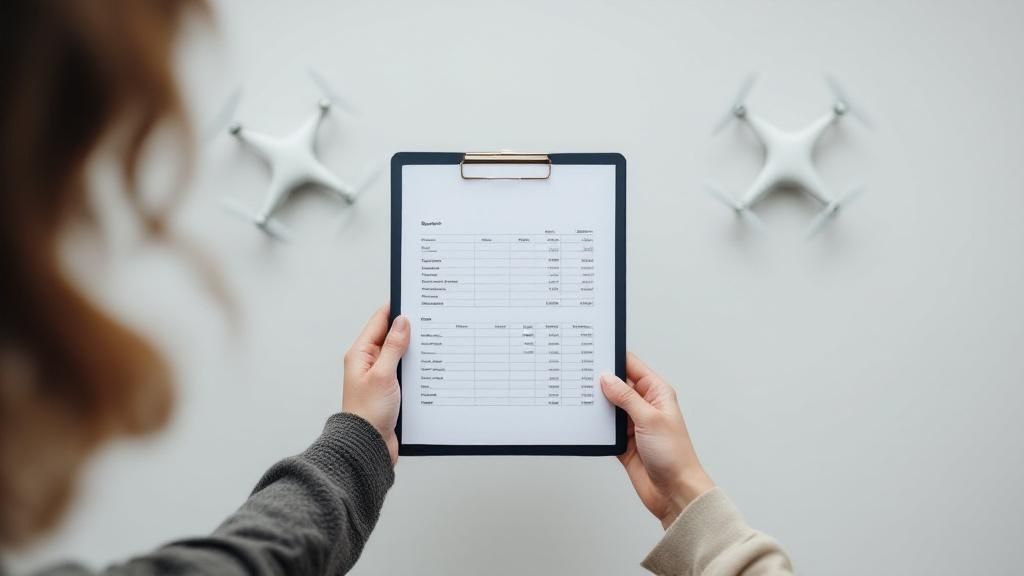
With consumer drones popping up everywhere, it's easy to think that getting those jaw-dropping aerial shots is a piece of cake. You might even be tempted to ask a buddy with a new drone to cover your event, hoping to save a few bucks. But let me tell you, the difference between an amateur and a pro is night and day. Cutting corners here often leads to regret.
Hiring a true professional is one of the best moves you can make for your project. You're not just paying someone to fly a drone around; you're buying peace of mind. A seasoned pro lives and breathes FAA regulations, making sure every flight is legal and safe. This doesn't just look professional—it protects you from huge fines and scary liability issues.
The Value of Experience and Artistry
Beyond the must-have safety and legal stuff, a professional brings an artistic eye that no amount of technology can replace. They're storytellers. They know how to frame a shot, how to move the camera smoothly, and how to use light to make everything look like it belongs on the big screen.
Think of it like this: handing someone a fancy paintbrush doesn't make them Picasso. In the same way, just owning a top-of-the-line drone doesn't make someone a skilled pilot or filmmaker. This expertise is a huge part of what you're paying for when you see professional drone videography rates.
An experienced pilot knows how to:
- Plan Shots Like a Director: They’ll scout the location and map out a flight path to get the best angles without getting in the way of your event.
- Roll with the Punches: Pros are masters at handling the unexpected. A sudden change in weather, tricky lighting, or a new obstacle? They handle it smoothly.
- Direct the Scene: They can guide people on the ground or work with other camera crews to nail the perfect shot, which saves time and guarantees a polished look.
For something like a wedding, this level of skill isn't just nice to have—it's essential. Capturing those once-in-a-lifetime moments from breathtaking perspectives takes real experience. You can dive deeper into this in our guide to drone wedding photography.
A Booming Industry for a Reason
The demand for killer aerial footage has absolutely exploded, and it’s clear this isn't just a fad. The market is buzzing, and that has a direct impact on pricing.
Commercial drone services are the fastest-growing part of the entire drone industry. This surge is a big reason why drone videography rates are what they are—the skill and value they add to projects justify the cost of hiring an expert.
This boom is happening because people get it. They see the incredible impact that professional aerial video has.
When it comes down to it, paying for a pro is what takes your project from "meh" to "wow." It’s the difference between a shaky, amateur video and a stunning visual story that truly grabs your audience.
Got Questions About Drone Videography? We've Got Answers.
When you're in the thick of event planning, the last thing you need is to get bogged down in technical jargon. So, let’s clear the air. We’ve pulled together the most common questions we get about drone videography rates and what goes into the service. Think of this as your personal cheat sheet.
Our whole goal here is to help you feel confident, know what questions to ask, and really understand the value you’re getting. That way, you can be sure your budget is going toward those incredible aerial shots that truly make an event memorable.
What’s a Fair Hourly Rate for a Drone Pilot?
This is the million-dollar question, and the honest answer is, "it depends." But to give you a solid ballpark, a professional drone service usually lands somewhere between $150 and $500 per hour. The reason for that big range is that you're not just paying for a drone to be in the air.
Let's break down what you're typically getting at each end of the spectrum:
- $150 – $250 per hour: In this bracket, you're generally hiring an experienced, certified pilot with good, professional-level gear. The price usually covers their flight time and hands you the raw, unedited 4K footage. This is a fantastic choice if you already have a video editor on your team or just need some high-quality aerial clips to sprinkle into a larger project.
- $250 – $500+ per hour: Now you're moving into a more all-inclusive package. This rate doesn't just cover flying the drone; it also includes a hefty amount of post-production work. The pilot (or their team) will handle color grading, editing, and delivering a polished final video that’s ready for you to share. You're also paying for top-tier expertise, higher-end cinematic drones, and more intricate flight planning.
The real takeaway is that an hourly rate isn't just "flight time." It's a snapshot of the entire service. A higher price often means you're getting a finished, story-driven film, not just a hard drive full of files.
Do I Need to Worry About Permits for the Shoot?
Here’s a piece of good news: you don't have to worry about permits at all. That's 100% on your professional drone pilot. A certified pilot isn't just a creative with a cool toy; they're a licensed aviator who operates under strict FAA (Federal Aviation Administration) rules.
Honestly, this is a massive part of the value they bring. A true pro handles all the behind-the-scenes work to make sure every flight is safe and legal. This includes:
- Checking the Airspace: They use special software to map out your venue and check for things like nearby airports, temporary flight restrictions, or other no-fly zones.
- Getting Authorizations: If your event is in controlled airspace, they'll file for clearance through systems like LAANC (Low Altitude Authorization and Notification Capability).
- Managing Waivers: Need to fly at night or over a crowd? That requires special waivers from the FAA, and your pilot is the one responsible for securing them.
This is exactly why hiring a certified professional is non-negotiable. It takes the legal risk completely off your plate and ensures your event gets captured without any regulatory headaches or, worse, hefty fines.
Raw Footage vs. Edited Video: What's the Big Difference?
Getting this distinction is crucial for setting your budget and your expectations. I like to use a cooking analogy: raw footage is like getting a grocery cart full of fresh, high-quality ingredients. An edited video is the final, beautifully plated, perfectly cooked dish that gets served to your guests.
Raw footage is every single clip, straight from the drone's memory card. It’s uncolored, unedited, and includes every take—the good ones, the bad ones, and the bumpy ones. All the potential is there, but it needs a skilled editor to turn it into something compelling.
An edited video, on the other hand, is a story. This is where the real magic happens. The post-production process takes those raw ingredients and transforms them into a masterpiece through:
- Storytelling: The editor sifts through everything to pick the very best shots, arranging them in a sequence that flows and tells a compelling story.
- Color Grading: This is where the mood is set. Colors and tones are adjusted to create a warm, vibrant, or cinematic feel.
- Sound Design: A licensed music track is added, along with sound effects, and all the audio is balanced for a professional finish.
- Graphics and Titles: This could be anything from your event logo to custom text or other motion graphics that enhance the video.
So, when you look at a quote, make sure you know which one you're paying for. A lower price might just get you the raw ingredients, leaving the cooking to you. A higher price usually means the full, delicious meal is delivered right to your table.
Ready to give your event an entirely new perspective with jaw-dropping aerial views? The team at 1021 Events is expert at weaving stunning drone videography into our complete event production services. Let’s create something unforgettable together. Find out more and book a consultation with us today at 1021events.com.
